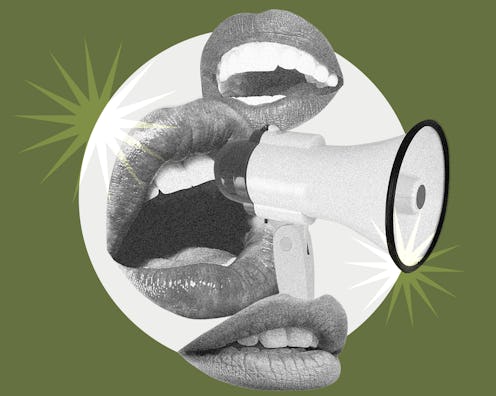Wellness
Navigating Self-Advocacy As A Woman With ADHD
Intended for U.S. Audiences Only

If you’re a woman who is or may be living with attention-deficit/hyperactivity disorder (ADHD), it can feel like everyone else got the script for life and you’re stuck improvising. Characterized by an ongoing pattern of symptoms that fall into one or more categories: inattention, hyperactivity and impulsivity, many women with ADHD spend years masking or overcompensating for their symptoms, trying to “be it all.”
This “masking” phenomenon is common in women, and for those with ADHD, it can result in a delay in diagnosis or a misdiagnosis. Many women aren’t even diagnosed until their late 30s or 40s, and even then, it can be by happenstance. In fact, one of the most common pathways for a woman with ADHD to receive a diagnosis begins when her child is diagnosed and she recognizes the symptoms in herself and consults a healthcare provider.
The encouraging news, however, is that more women are beginning to speak up about their experiences and recognize their ADHD symptoms. From 2020 to 2022, the percentage of women newly diagnosed with ADHD between ages 23-29 and 30-49 nearly doubled, underscoring the importance for women to talk to a healthcare provider about their symptoms and potential treatment options. Here are some ways you can advocate for yourself, and help ensure your experiences feel represented.
Acknowledging ADHD Symptoms
For women with ADHD, understanding how ADHD may show up for them is a powerful first step. In a world where many of us feel pressure to “do it all,” it can be easy for women to internalize or overcompensate for their ADHD symptoms — especially those related to inattention, like challenges with organization or prioritization. Unfortunately, women tend to mask or overcompensate for their ADHD symptoms and end up working harder to complete daily tasks. Acknowledging ADHD symptoms is the first move toward being able to get help to manage them.
Fostering Open Understanding
Your ADHD journey is unique, and fostering understanding among your loved ones can be a key source of support. Engaging in open discussions with friends and family about how ADHD affects your daily life — whether it’s challenges with time management, organization, or being present during conversations — can help them grasp your experiences more fully. Having honest conversations can lead to a more supportive environment where your needs are recognized and met, rather than misunderstood. Navigating ADHD symptoms can be challenging, and no one should have to go through it alone.
Talking To A Healthcare Professional
It’s important to discuss your experiences with a healthcare provider. They can diagnose ADHD and work with you to explore a management plan that may be right for your unique needs. This conversation can include various approaches, such as educational support, lifestyle adjustments, and a discussion about potential treatment options, such as Qelbree, a once-a-day, non-stimulant ADHD treatment for adults and children ages 6 years and older.
Qelbree® (viloxazine extended-release capsules) is a prescription medicine used to treat ADHD in adults and children 6 years and older. Please click here for full Prescribing Information, including Boxed Warning, and Medication Guide.
IMPORTANT SAFETY INFORMATION
Qelbree may increase suicidal thoughts and actions, in children and adults with ADHD, especially within the first few months of treatment or when the dose is changed. Tell your doctor if you or your child have (or if there is a family history of) suicidal thoughts or actions before starting Qelbree. Monitor your or your child’s moods, behaviors, thoughts, and feelings during treatment with Qelbree. Report any new or sudden changes in these symptoms right away.
Important Safety Information continued below.
It's important to remember that there's no one-size-fits-all approach to managing ADHD symptoms. A comprehensive plan often involves a combination of strategies tailored to the individual. The more you understand about ADHD and the available management options, the more confidently you can make informed decisions about your care in partnership with your healthcare provider.
IMPORTANT SAFETY INFORMATION (CONTINUED)
You should not take Qelbree if you or your child:
Take a medicine for depression called a monoamine oxidase inhibitor (MAOI) or have stopped taking an MAOI in the past 14 days. Also, you or your child should avoid alosetron, duloxetine, ramelteon, tasimelteon, tizanidine, and theophylline.
Qelbree can increase blood pressure and heart rate. Your or your child’s doctor will monitor these vital signs.
Qelbree may cause manic episodes in patients with bipolar disorder. Tell your doctor if you or your child show any signs of mania.
Do not drive or operate heavy machinery until you know how Qelbree will affect you or your child. Qelbree may cause you or your child to feel sleepy or tired.
The most common side effects of Qelbree in patients 6 to 17 years are sleepiness, not feeling hungry, feeling tired, nausea, vomiting, trouble sleeping, and irritability, and in adults, insomnia, headache, sleepiness, tiredness, nausea, decreased appetite, dry mouth, and constipation. These are not all the possible side effects of Qelbree.
You are encouraged to report negative side effects of prescription drugs to the FDA. Visit www.fda.gov/medwatch or call 1-800-FDA-1088.
Please see Medication Guide, including Boxed Warning.
QBE.2025-0215